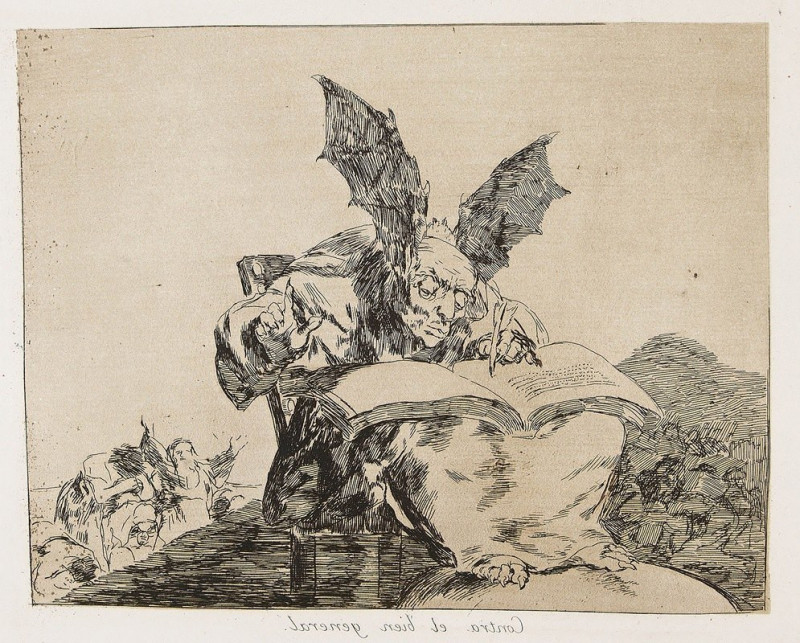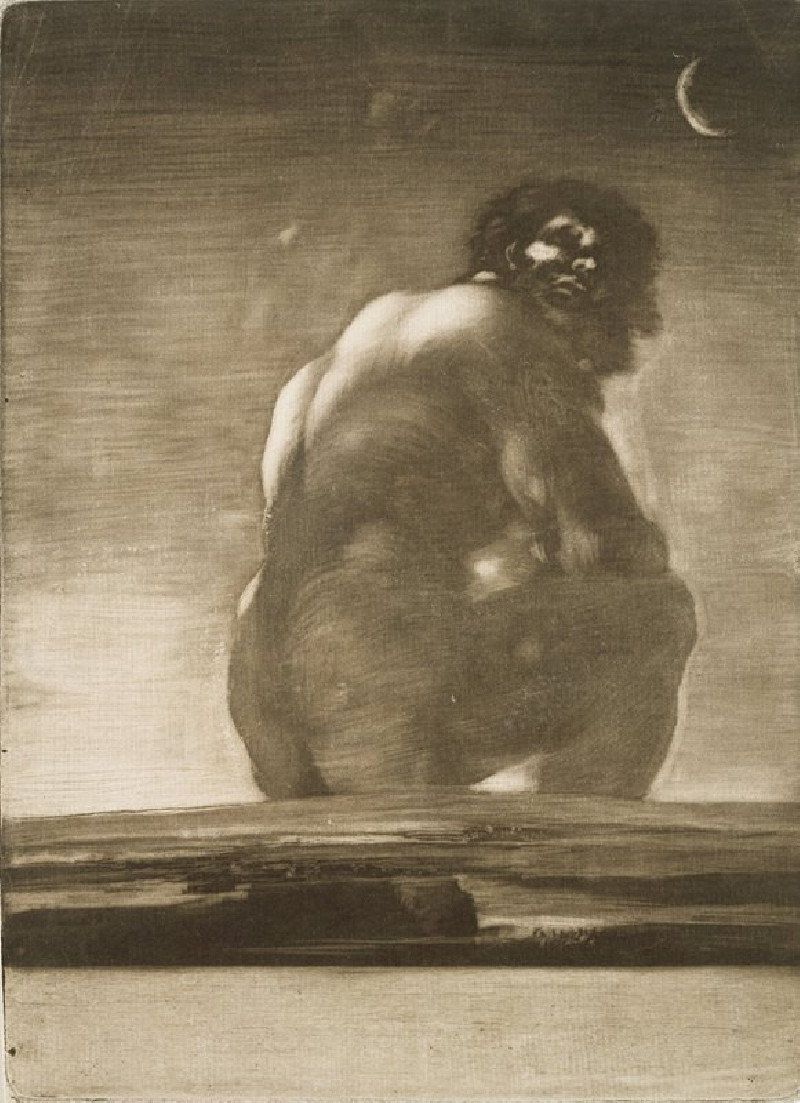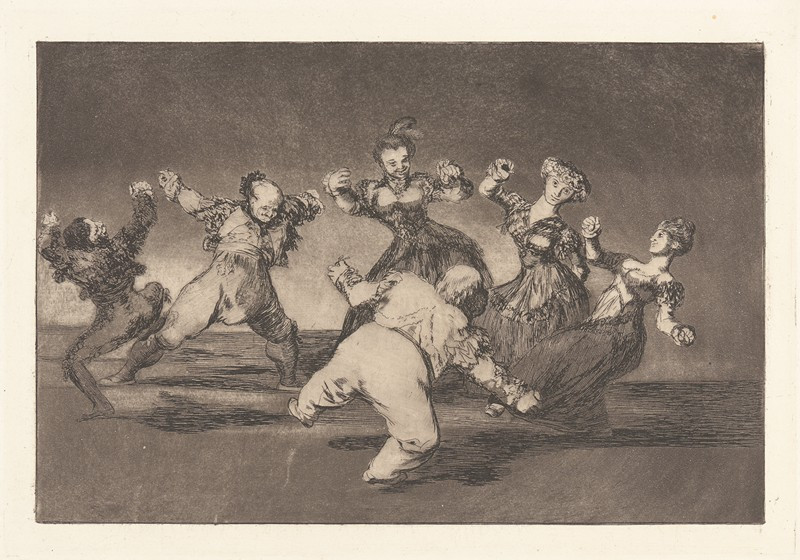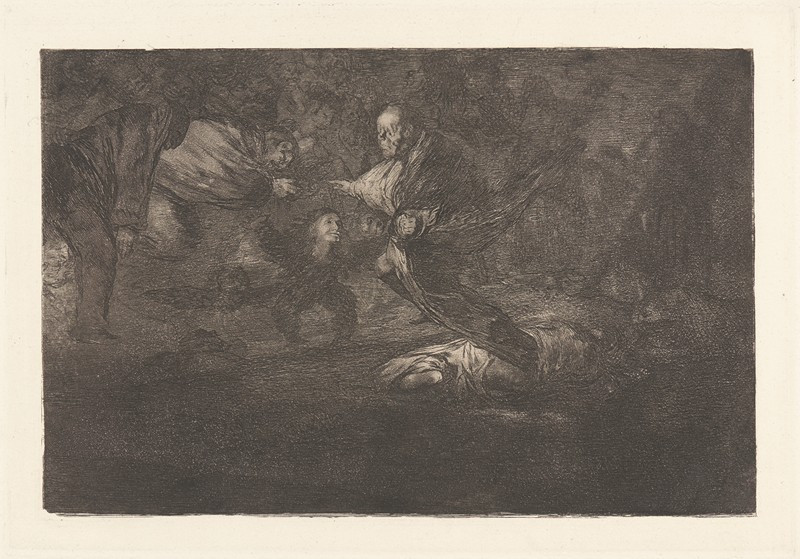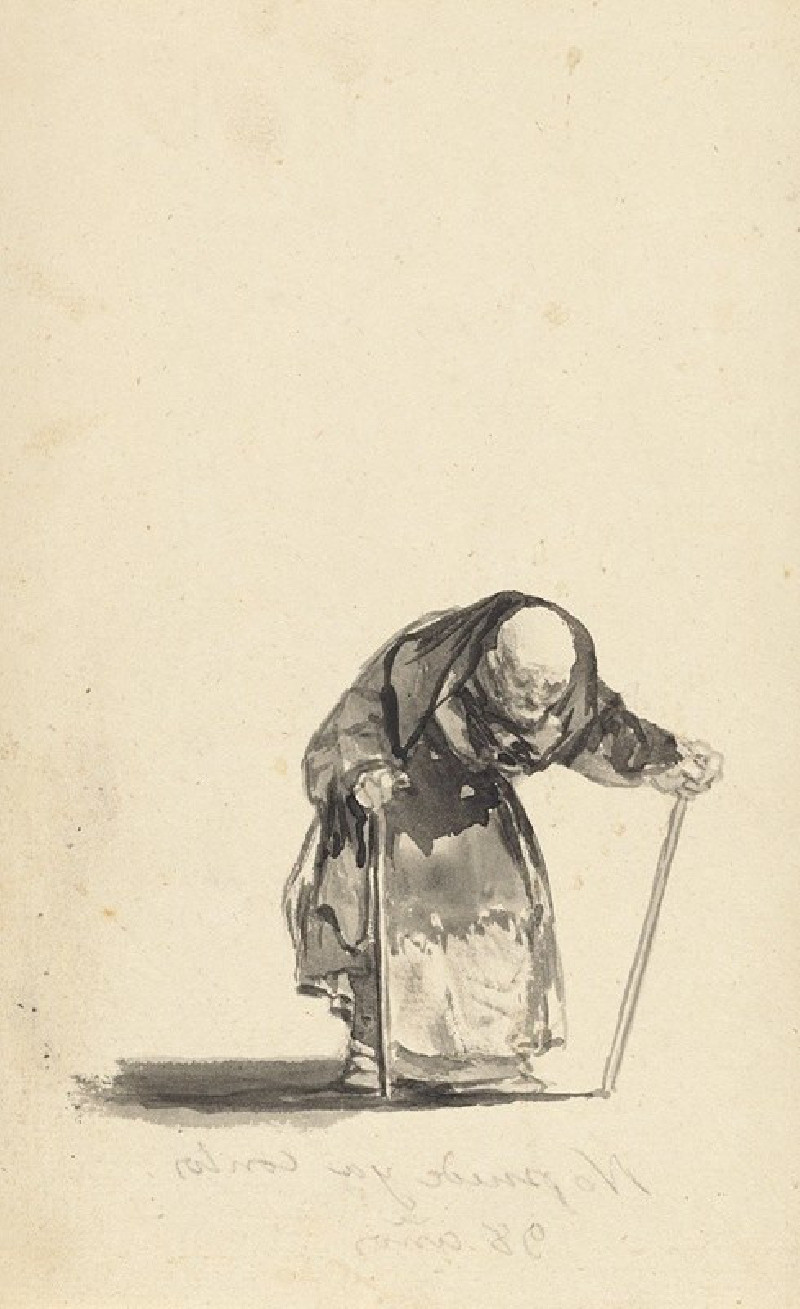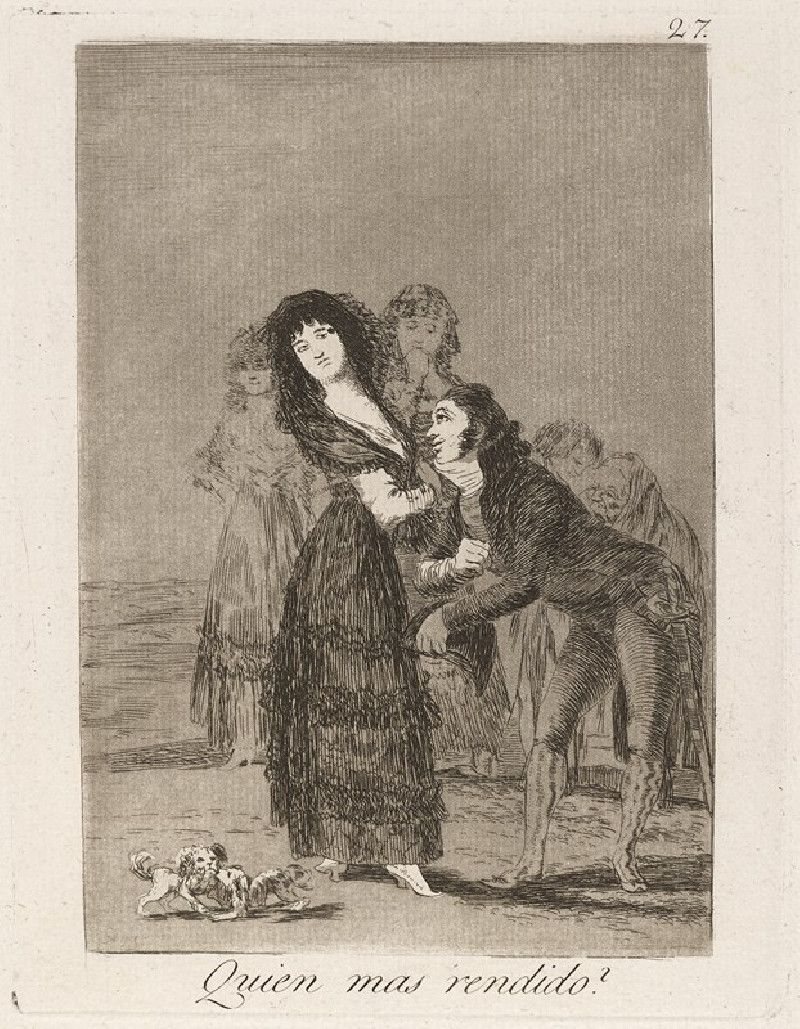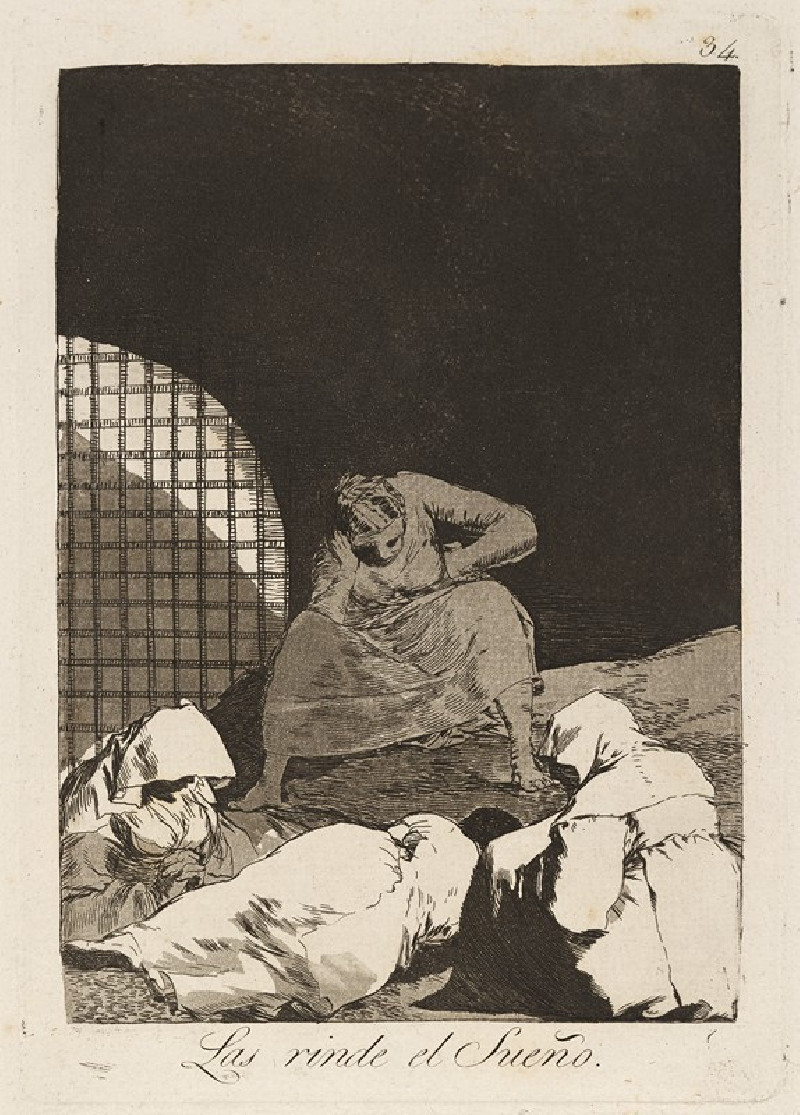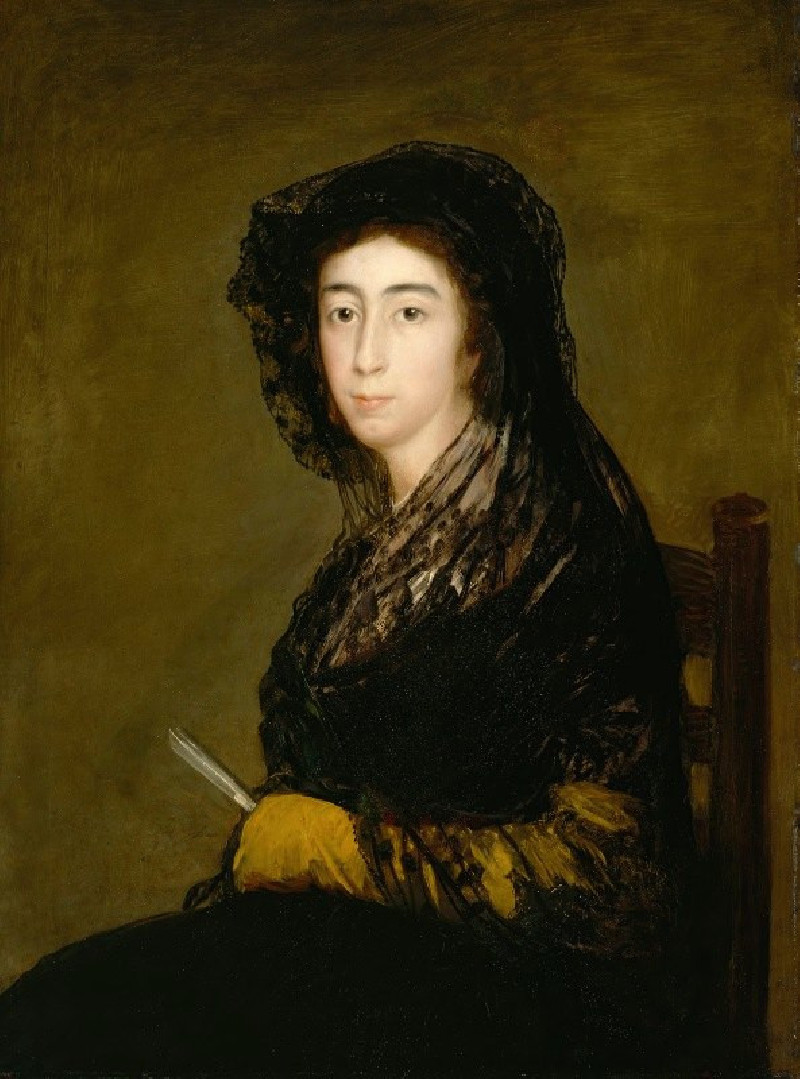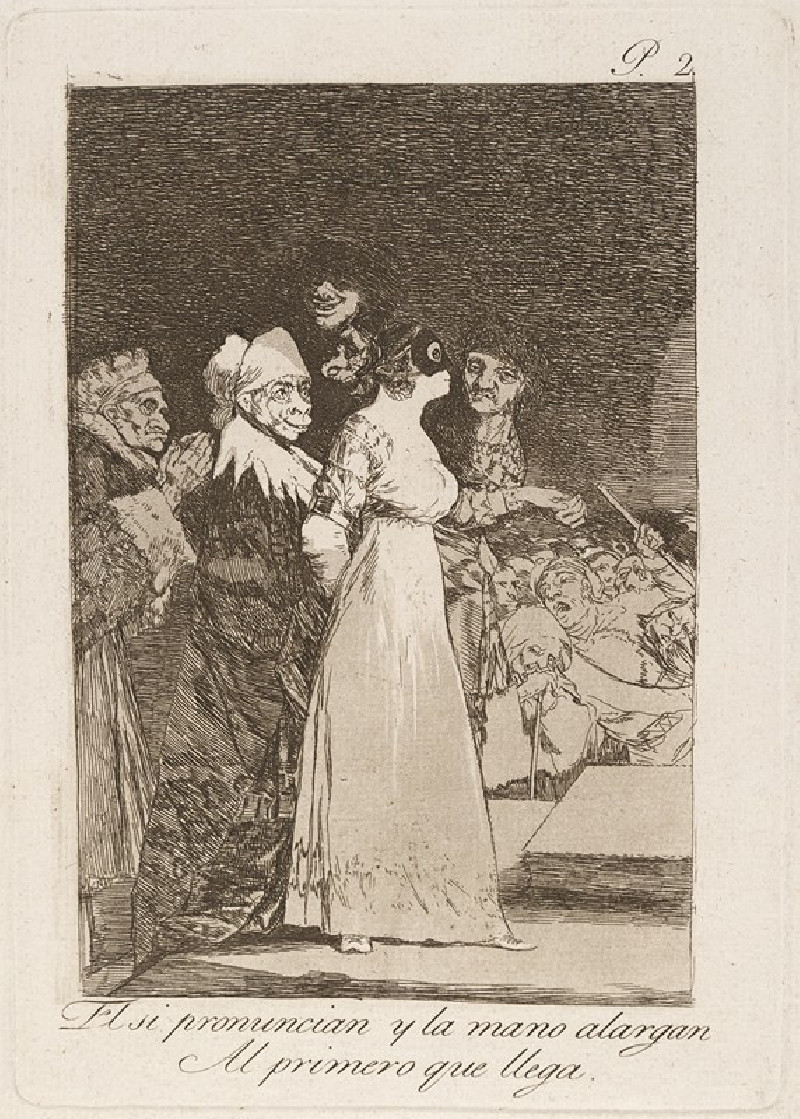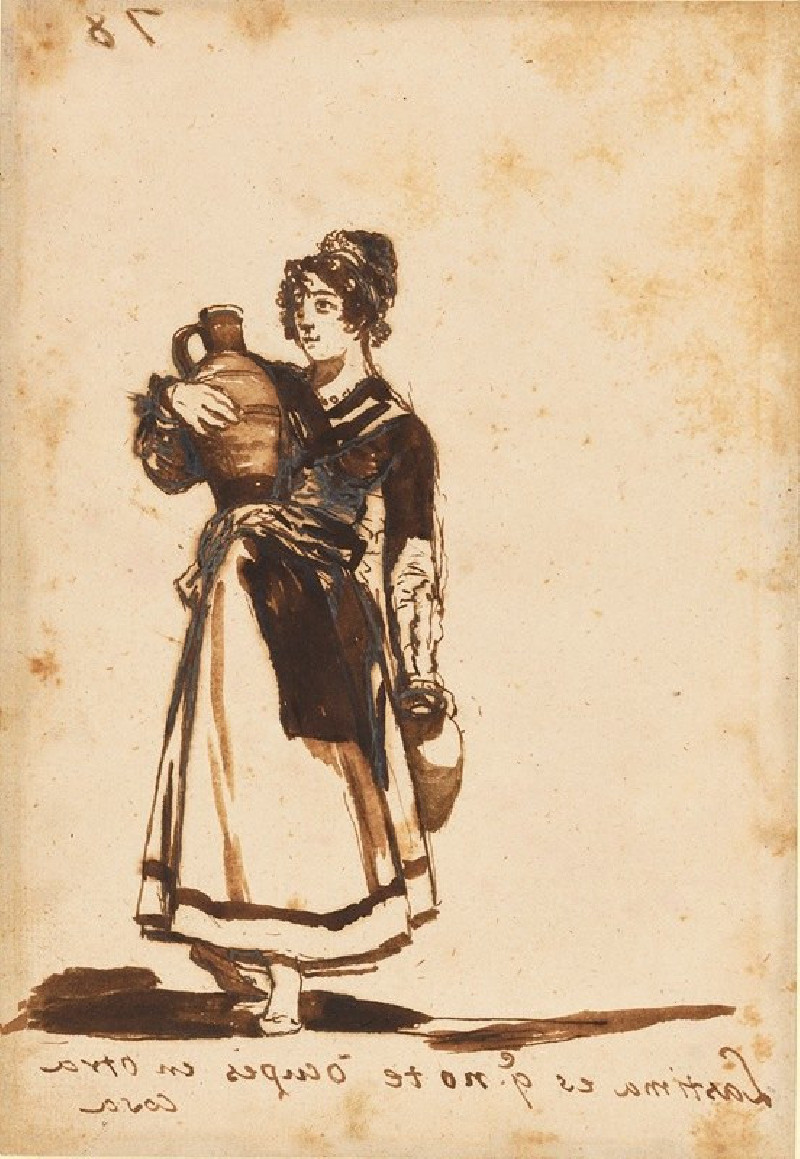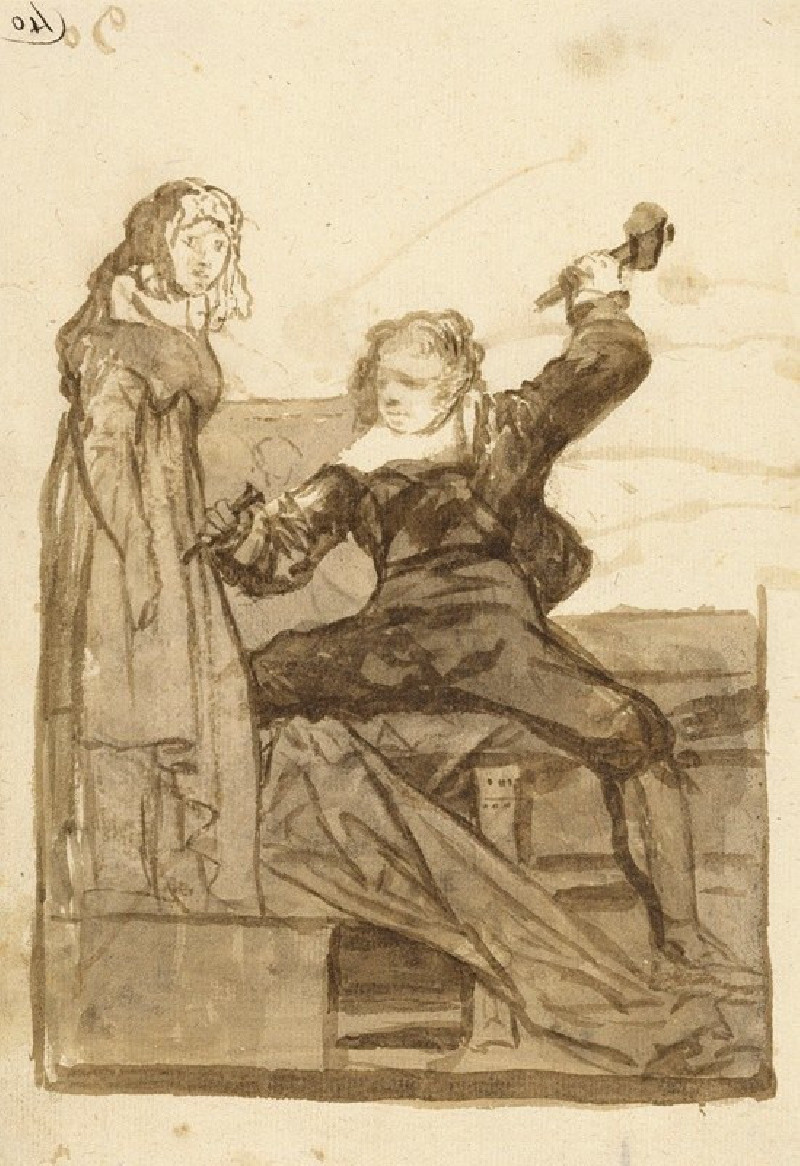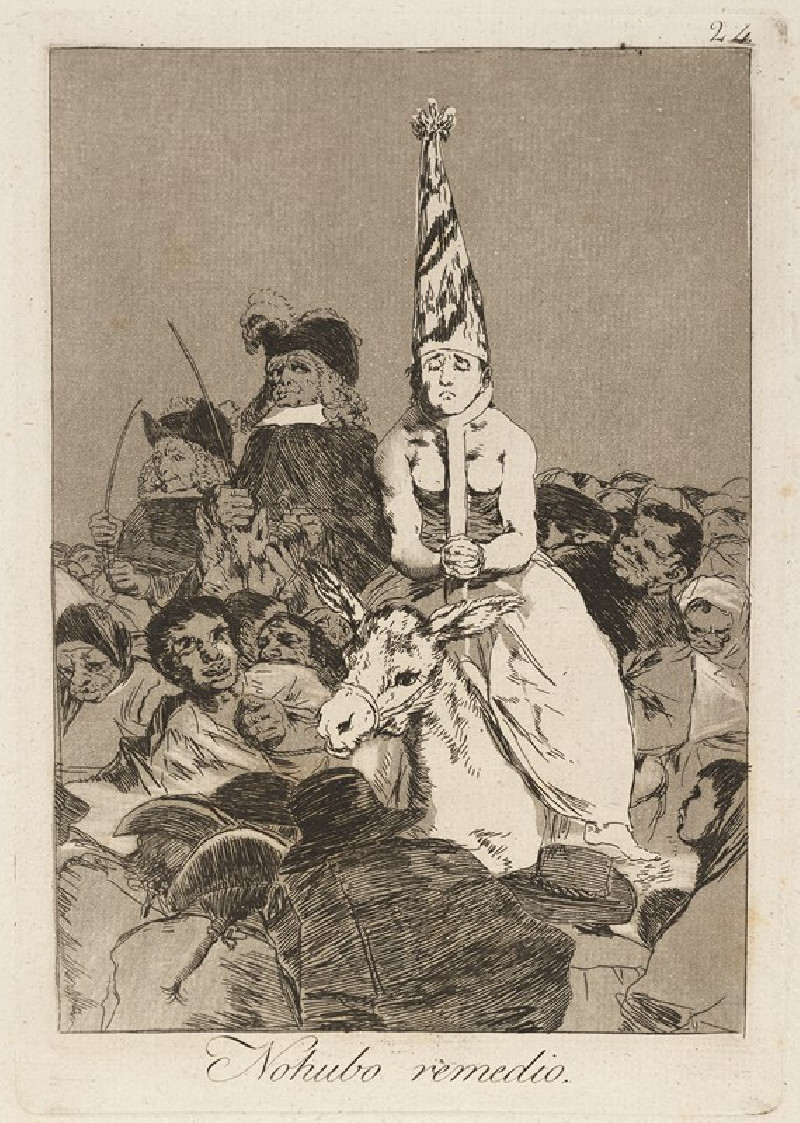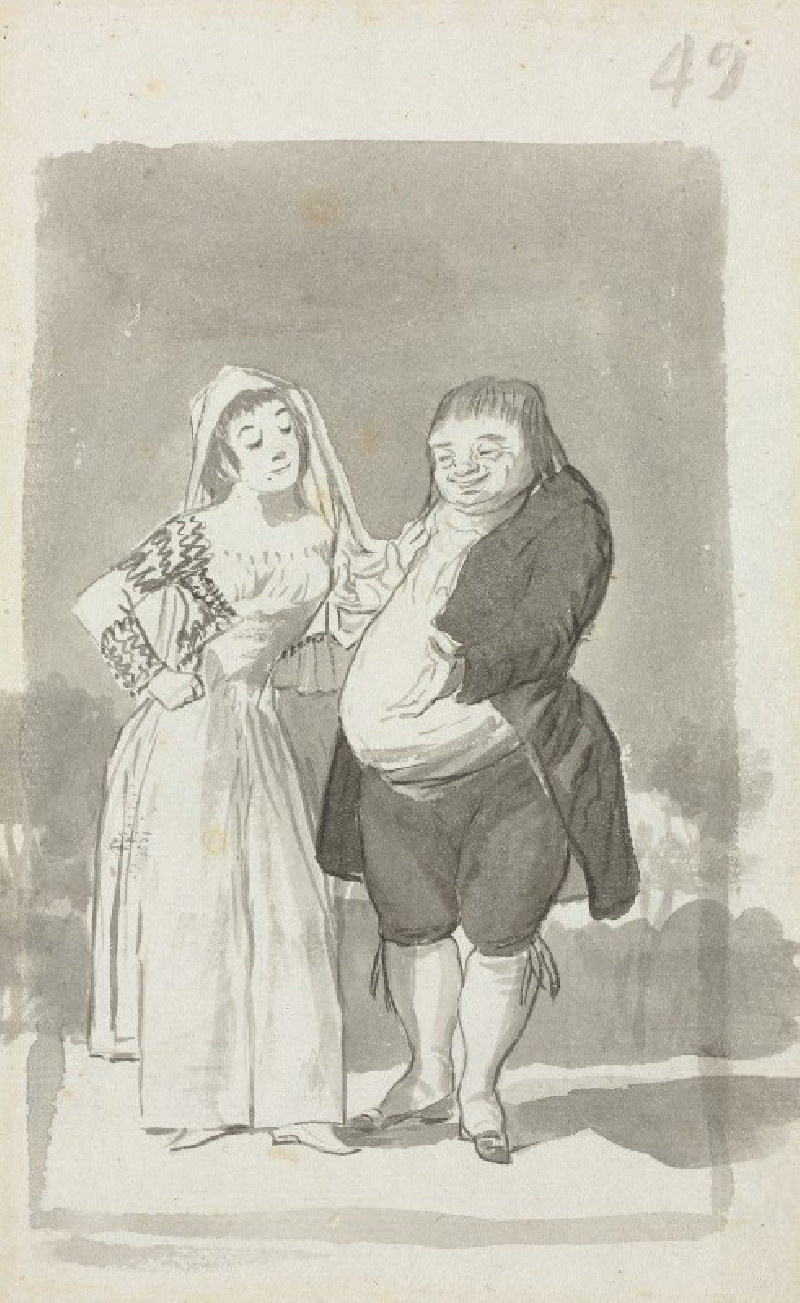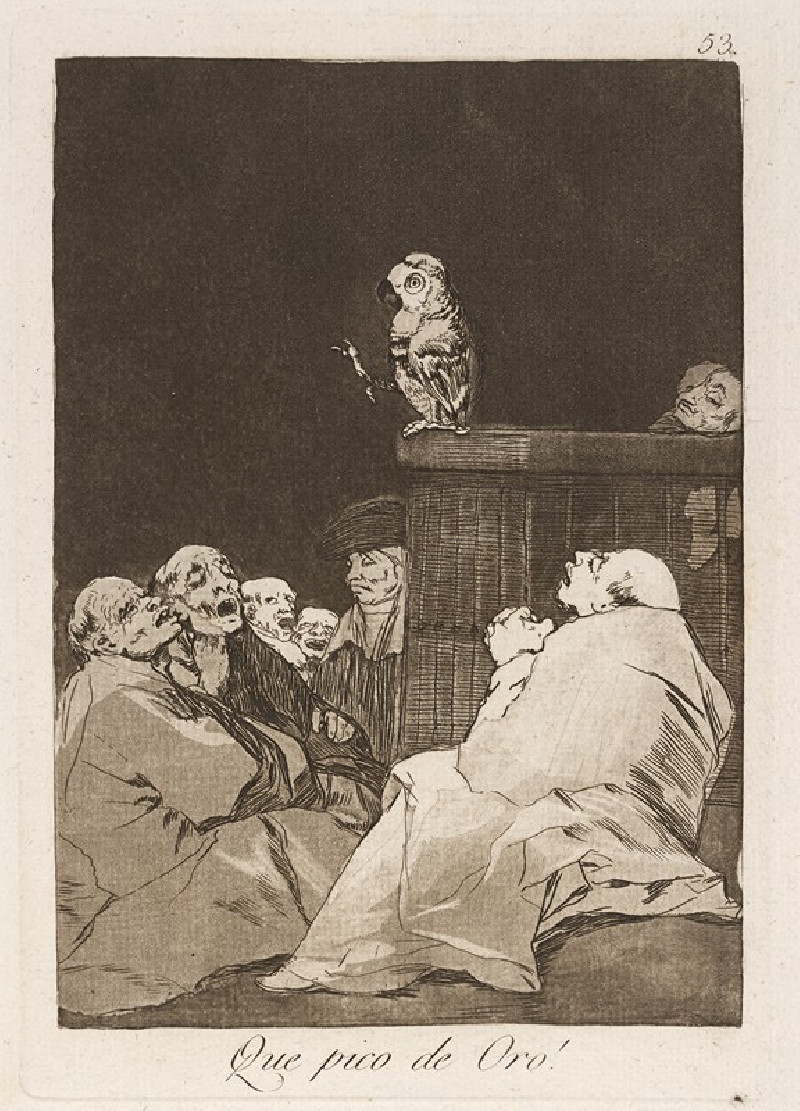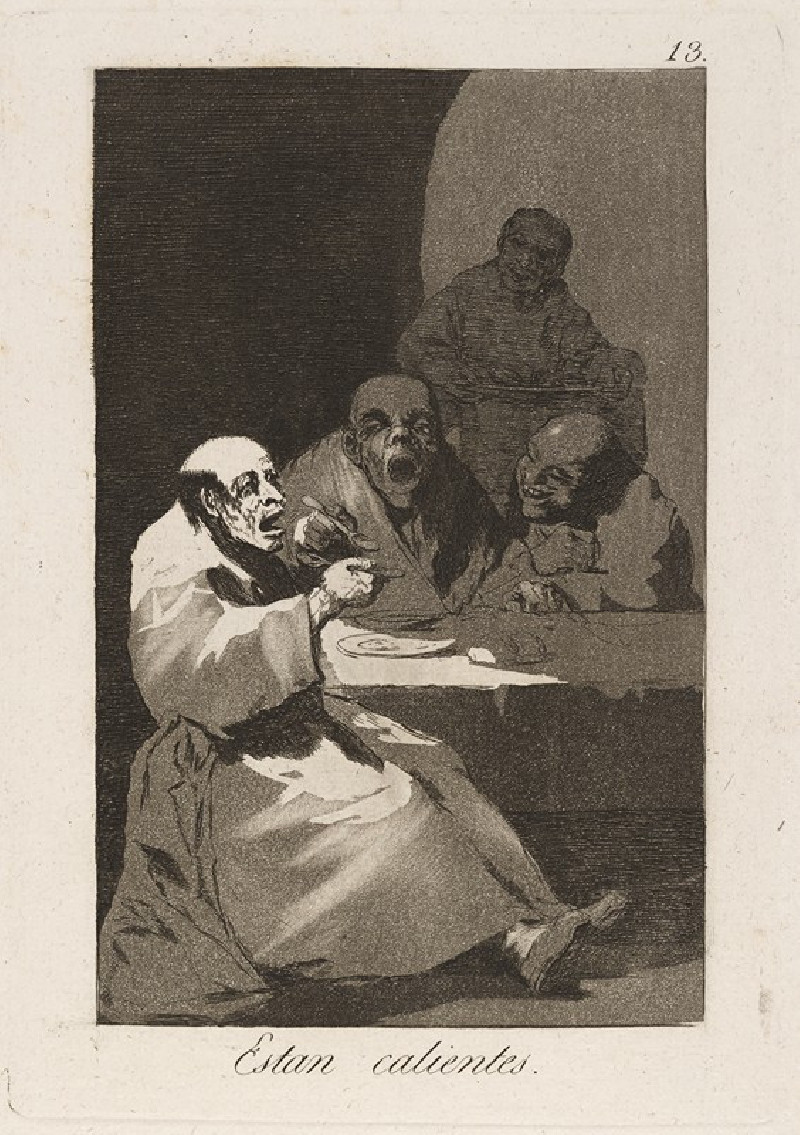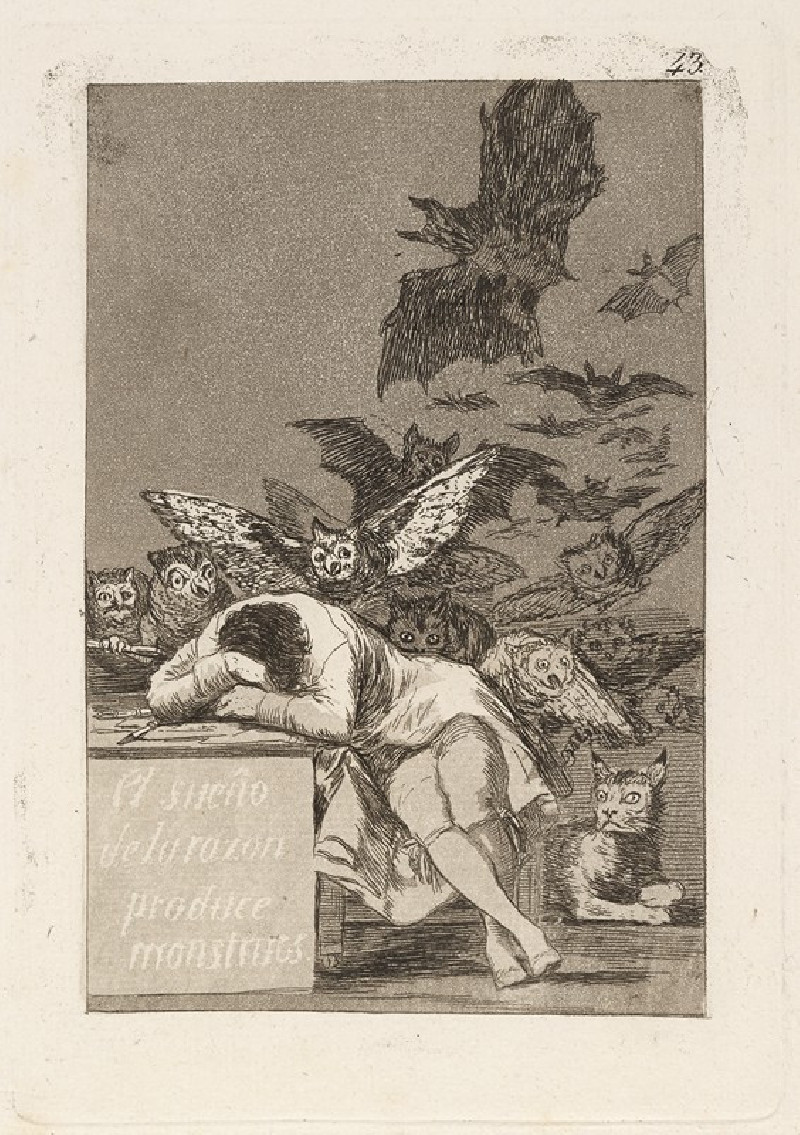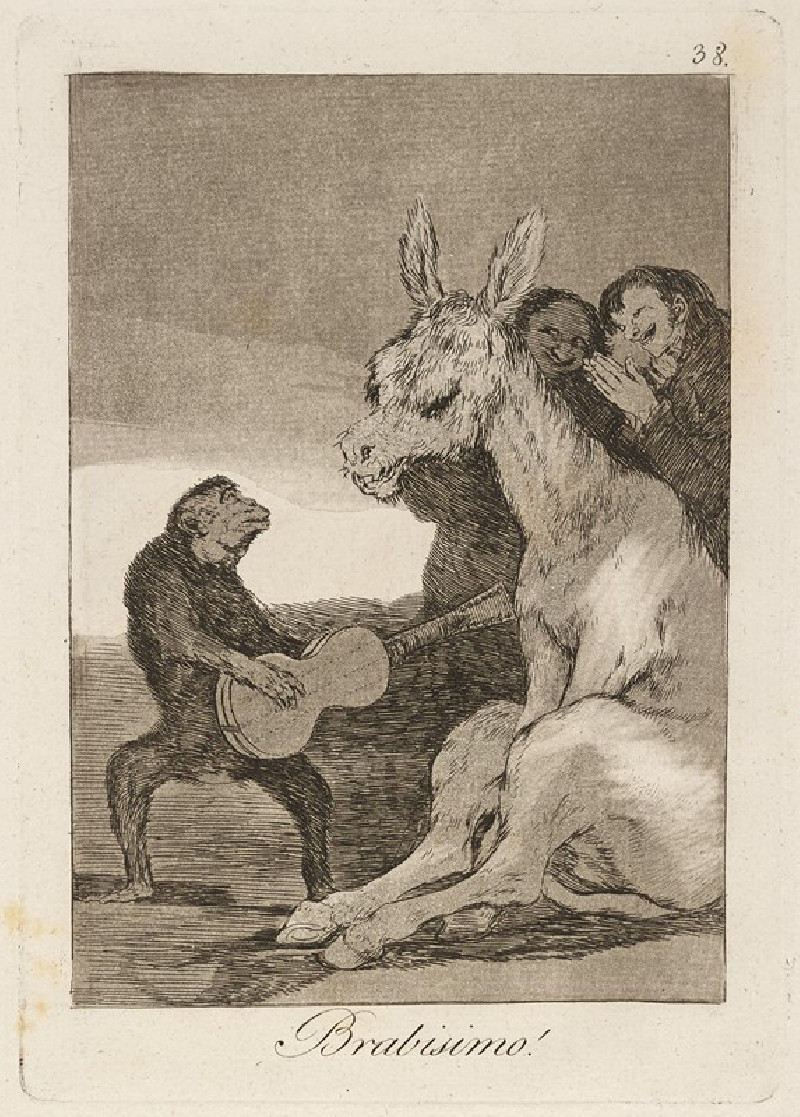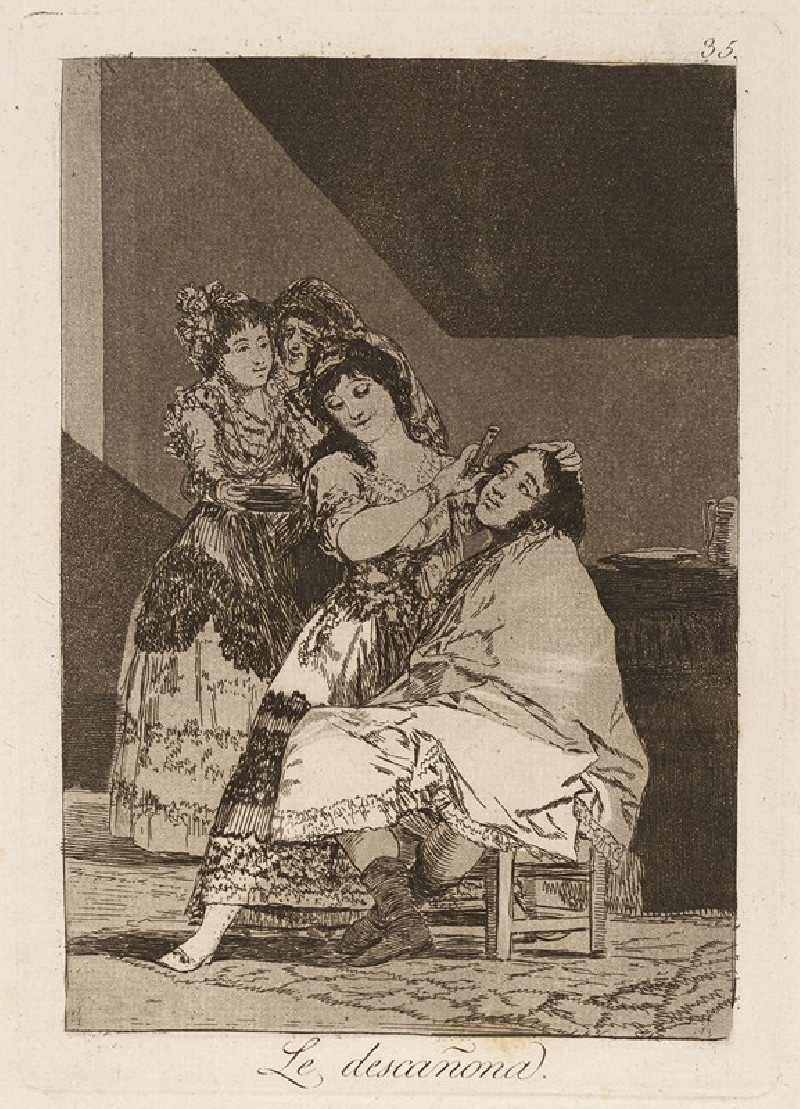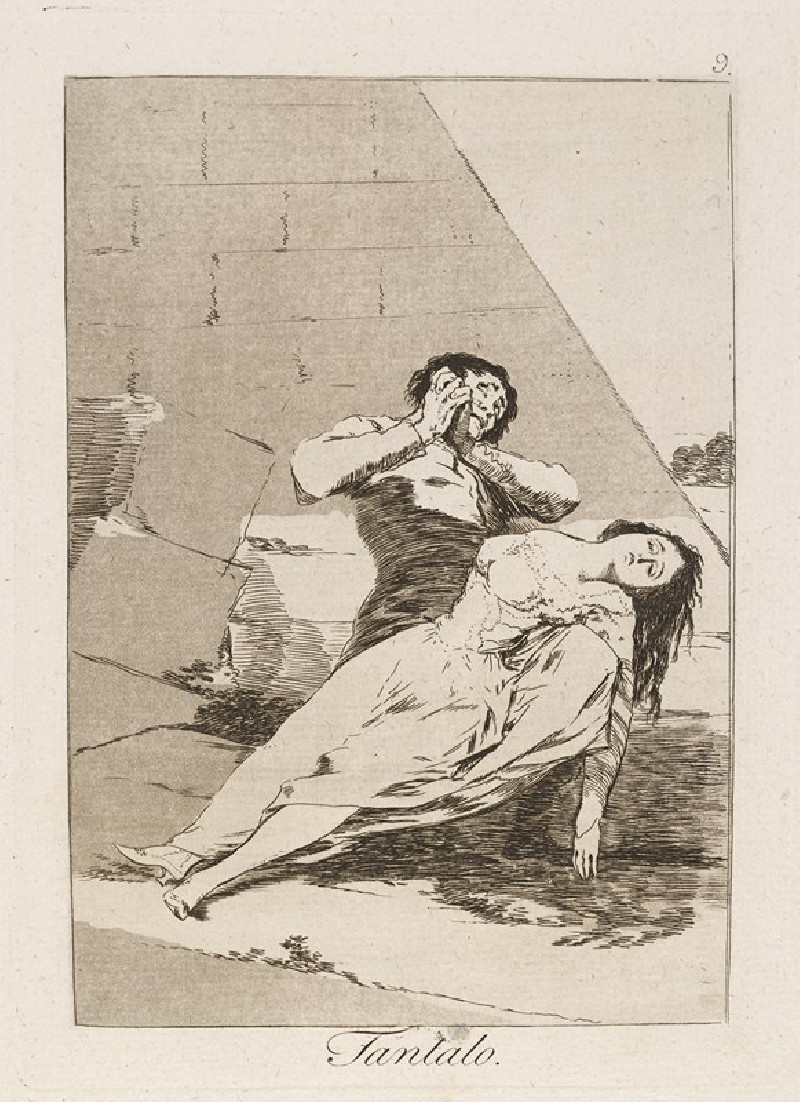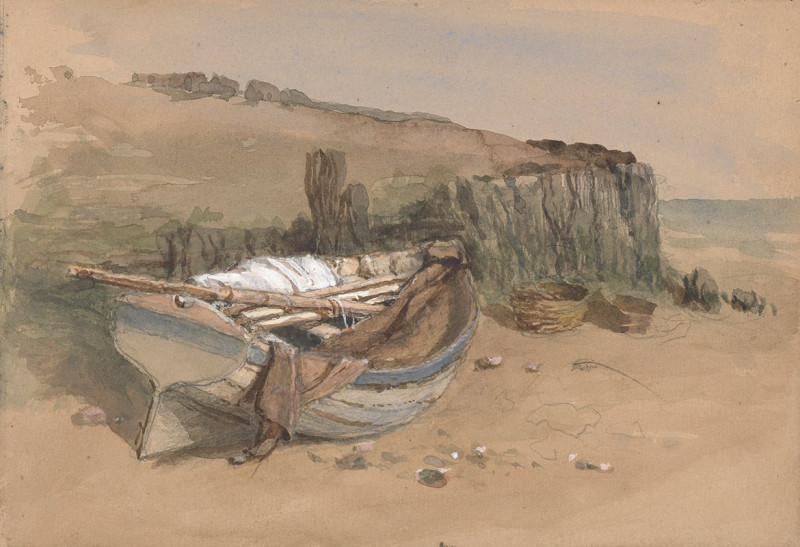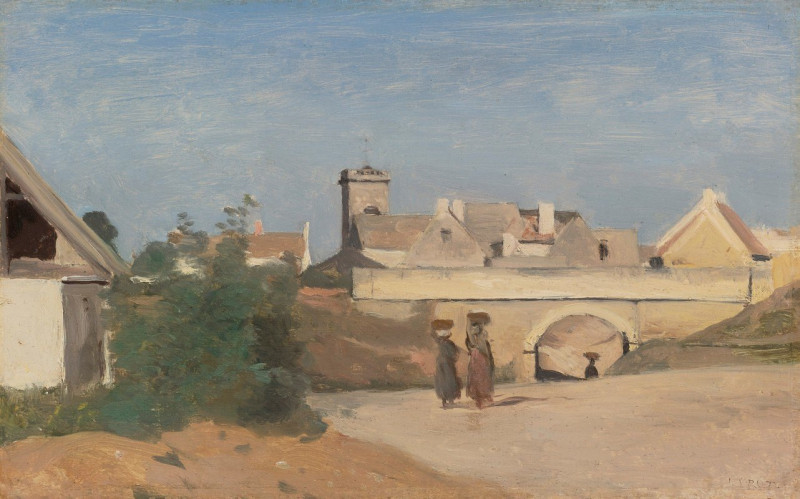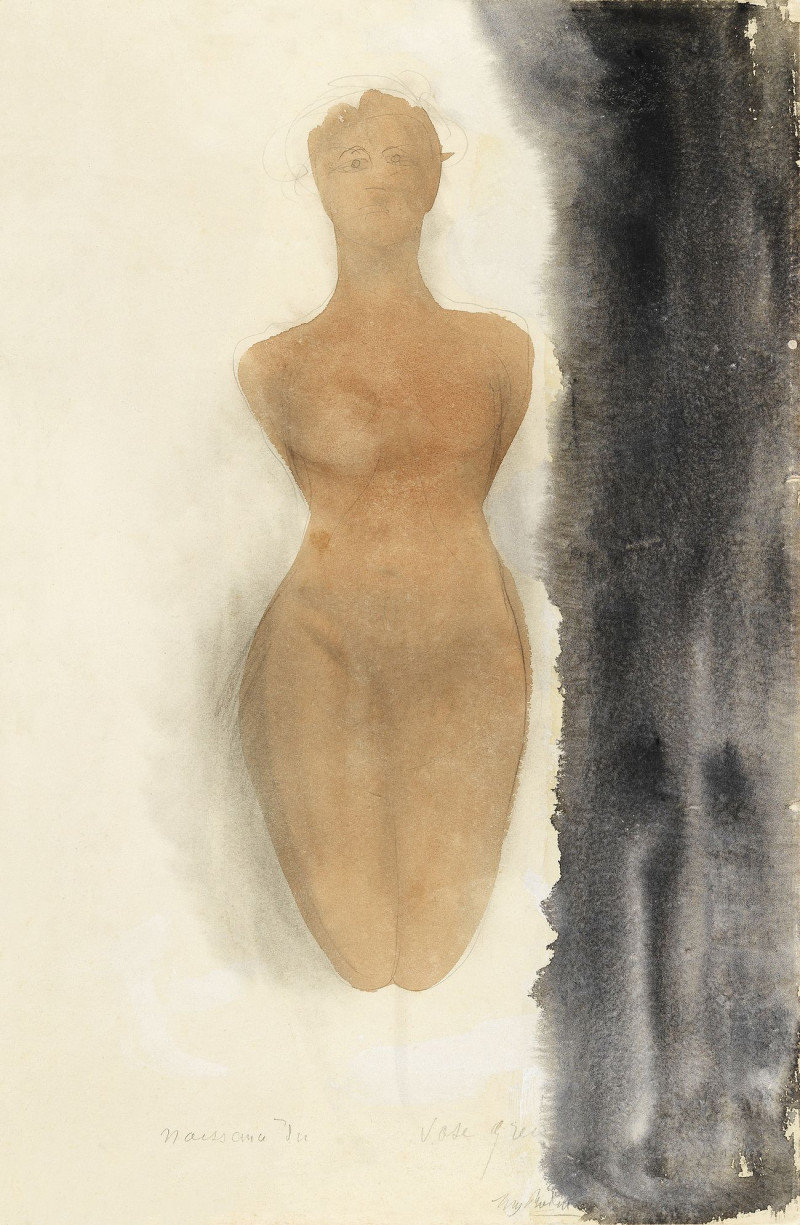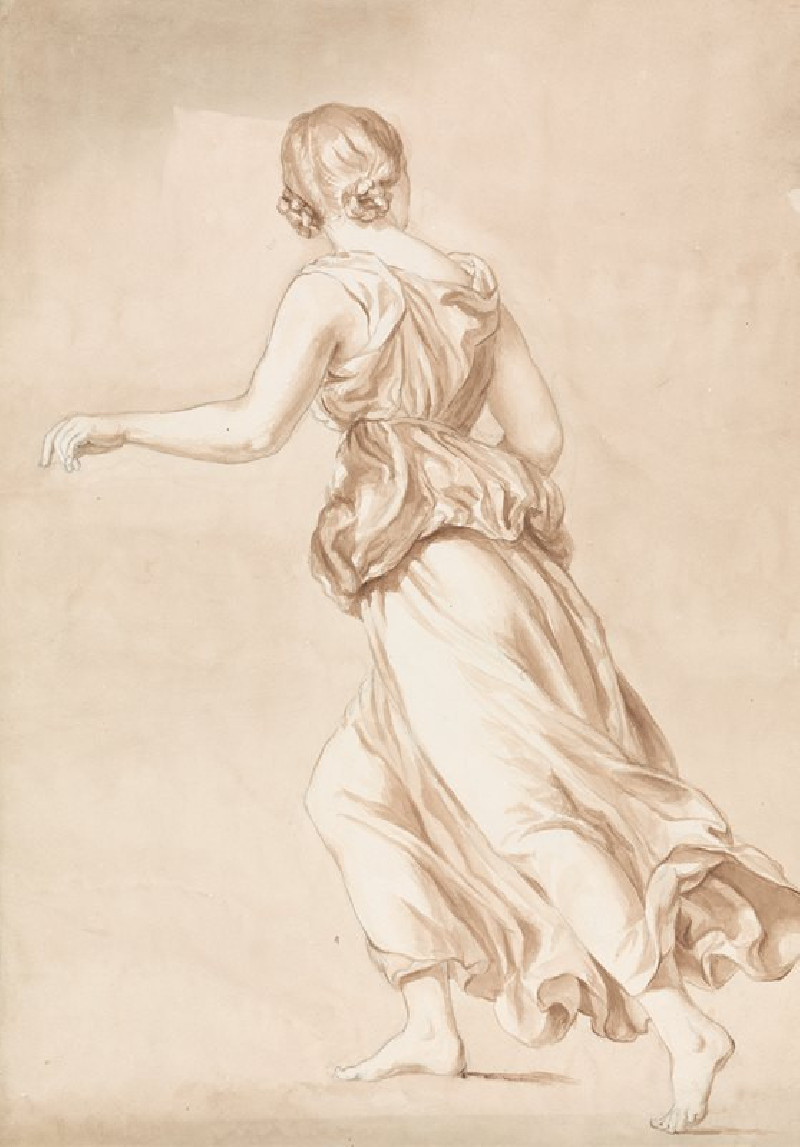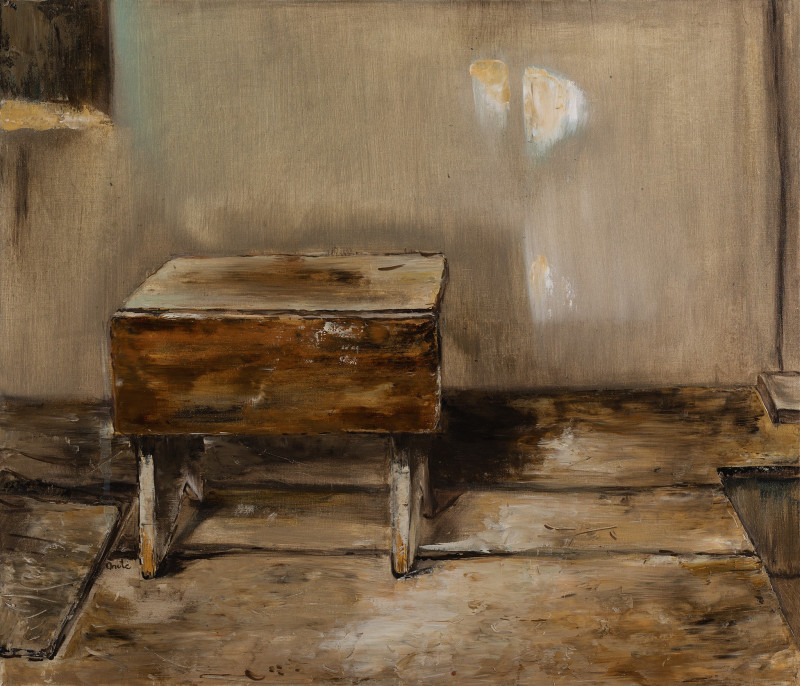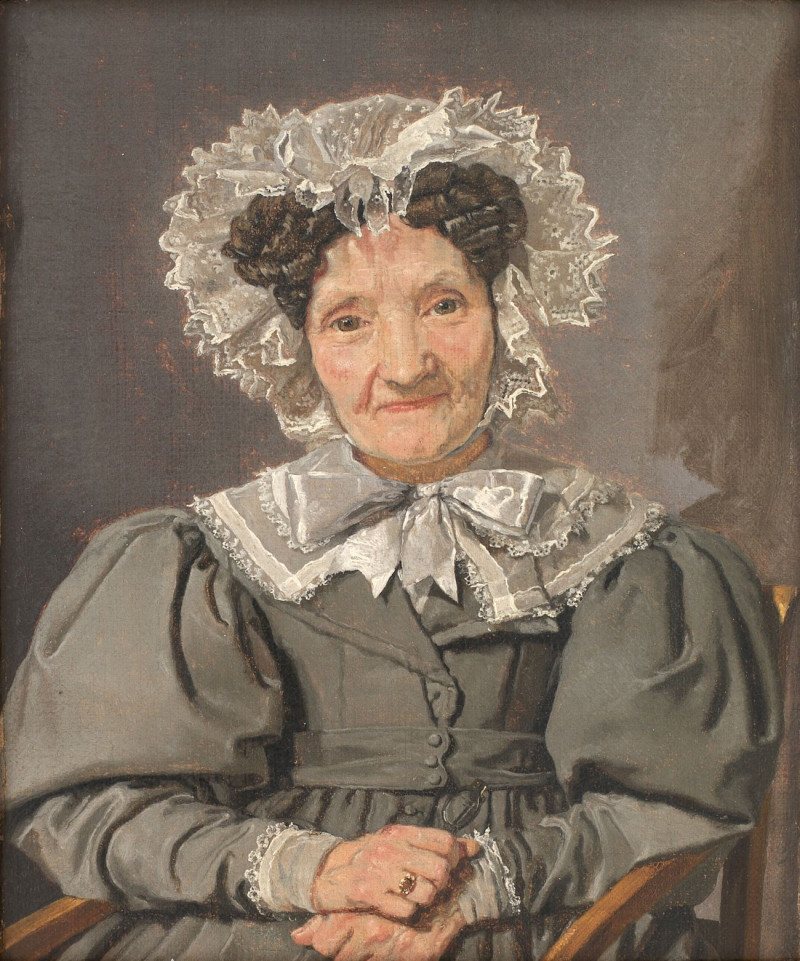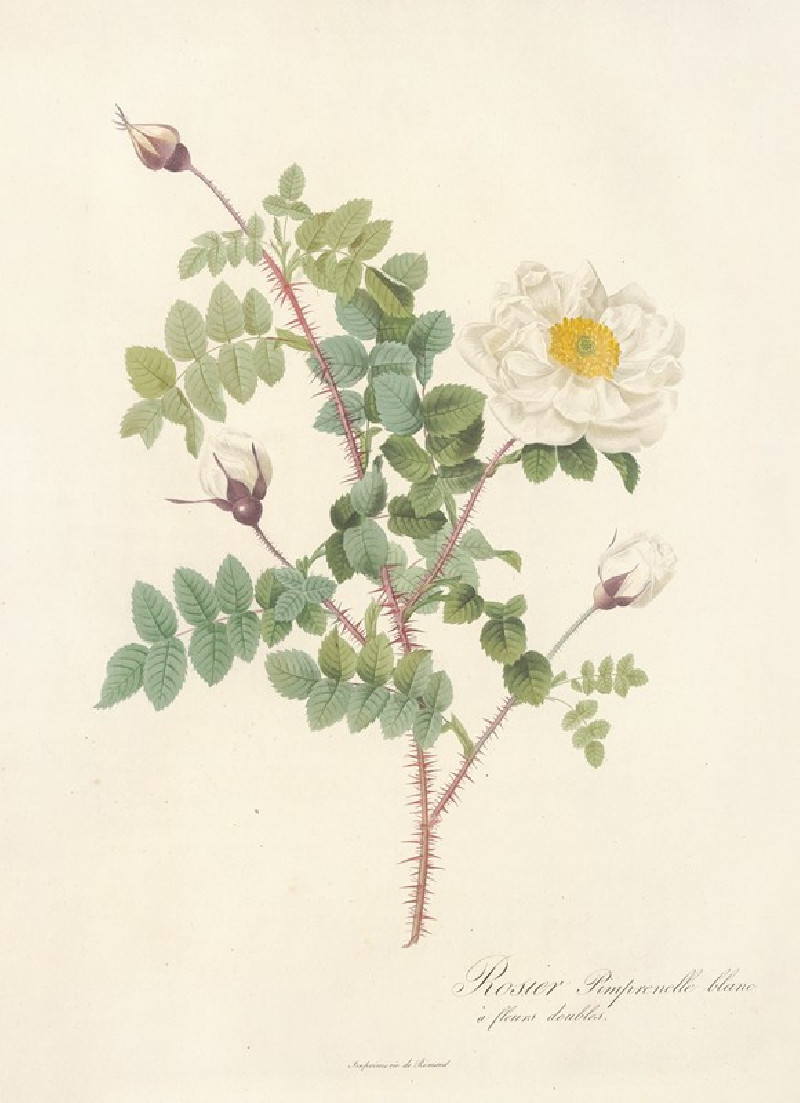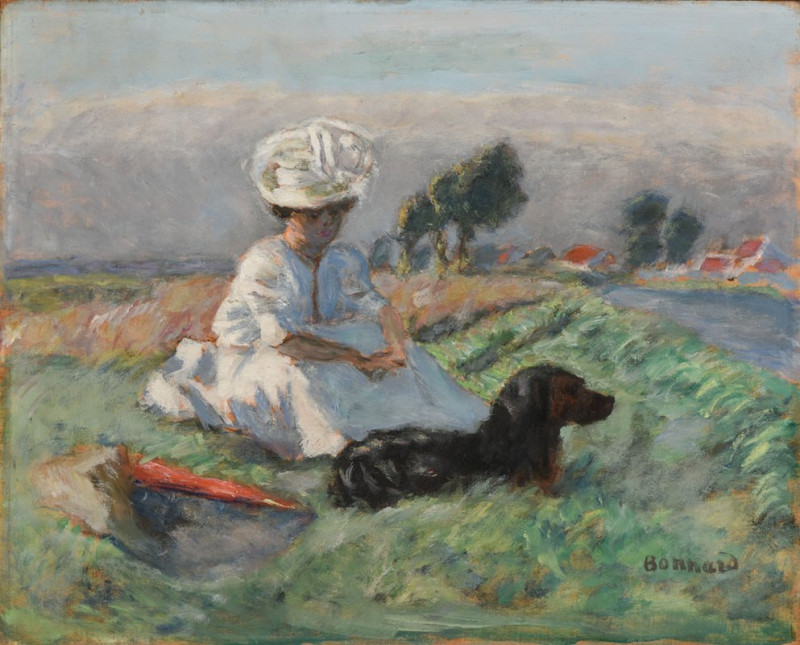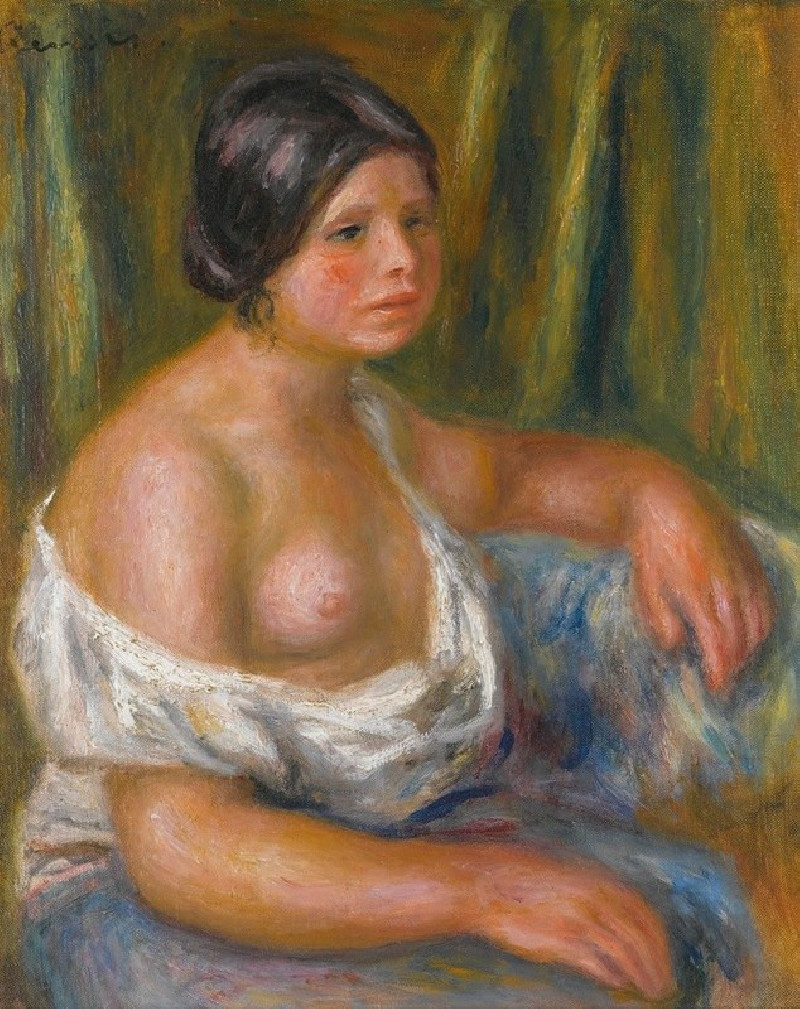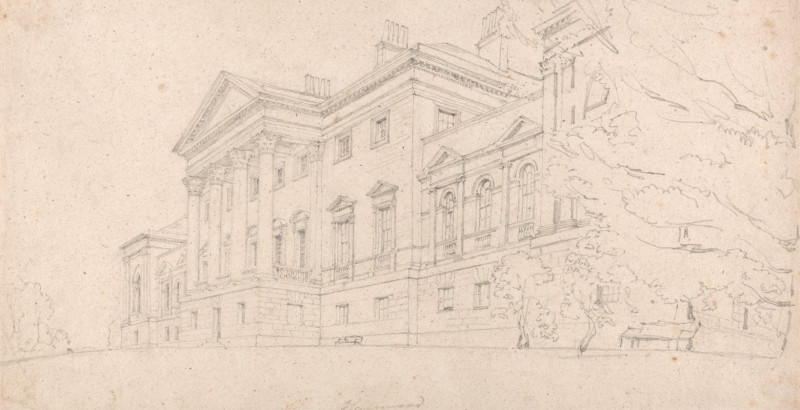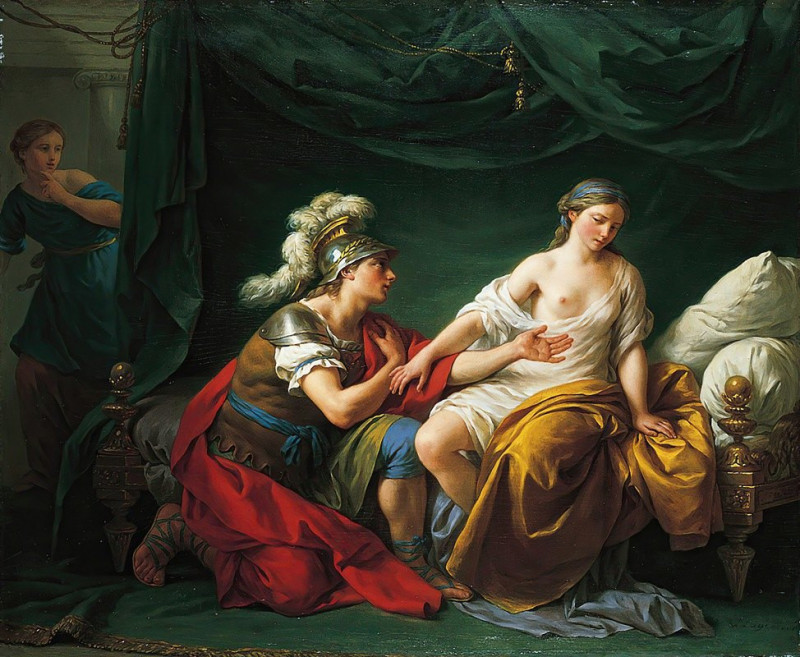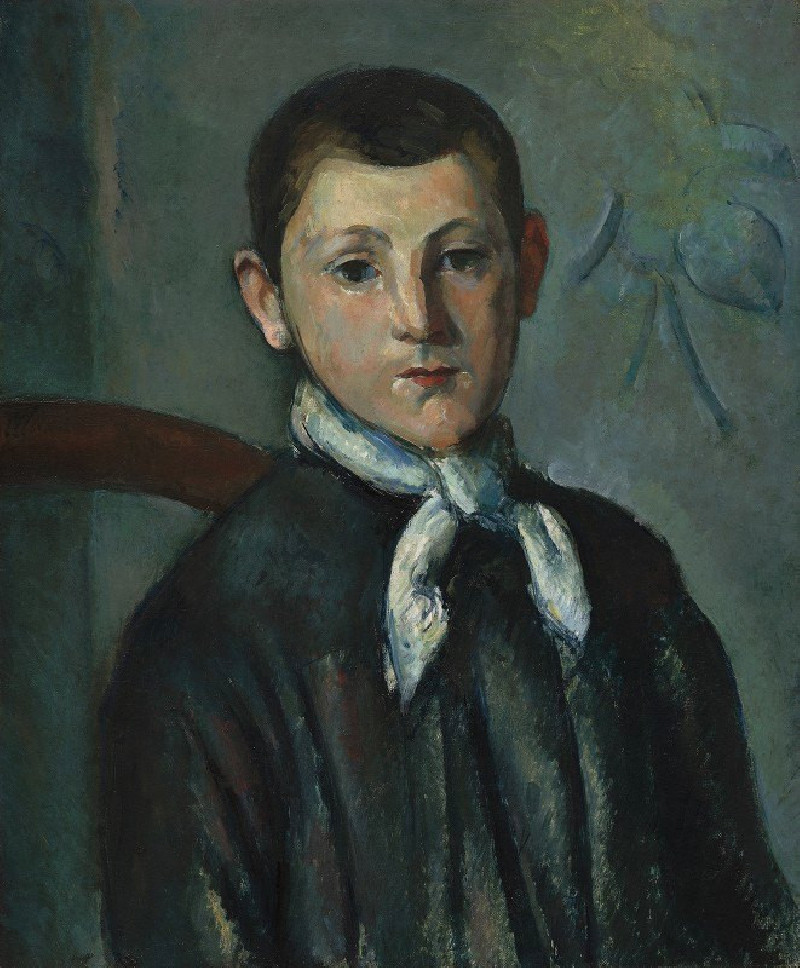Los desastres de la guerra (1892)
Technique: Giclée quality print
Recommended by our customers
More about this artwork
In the intriguing etching titled "Los desastres de la guerra" by Francisco de Goya, crafted in 1892, viewers are presented with a stark and thought-provoking scene that delves into the grim realities of war and its impact on humanity. Notably complex, this artwork features an overpowering figure that appears to be a mix of human and otherworldly elements, including large, bat-like wings. This spectral figure dominates the foreground as it reads from an oversized book, symbolizing perhaps the recording or lament of war's tragedies.In the background, a multitude of smaller figures can be seen in various states of distress and disarray, which effectively underscores the chaos and despair wrought by conflict. The contrasting sizes of the figures, with the central character so prominently displayed, might suggest the overwhelming force and inevitable nature of these disasters, dwarfing the human capacity to control or escape them.Goya, known for his unflinching commitment to realism and his predilection for themes of conflict, justice, and human suffering, uses a stark monochromatic palette that aligns well with the somber subject matter. The intricate details of this etching invite viewers to reflect deeply on the costs of war, not just as historical events but as perennial human calamities."Los desastres de la guerra" serves as a powerful reminder of the brutal impacts of war, rendered with the profound emotional and artistic depth characteristic of Goya's work.
Delivery
Returns
Francisco José de Goya y Lucientes (30 March 1746 – 16 April 1828) was a Spanish romantic painter and printmaker. He is considered the most important Spanish artist of the late 18th and early 19th centuries. His paintings, drawings, and engravings reflected contemporary historical upheavals and influenced important 19th- and 20th-century painters. Goya is often referred to as the last of the Old Masters and the first of the moderns.

